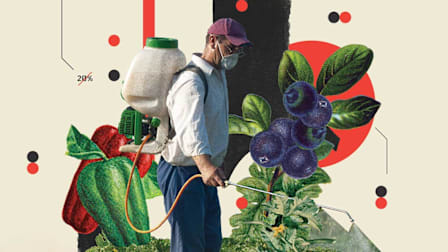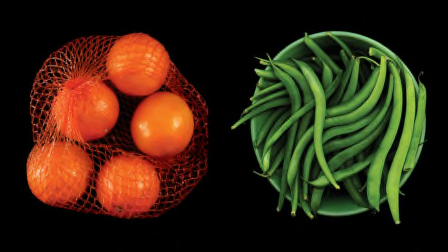EPA Bans Dangerous Pesticide DCPA
Ending the use of DCPA, which can be harmful to fetuses, is the most aggressive action taken by the agency regarding a pesticide in decades

This week the Environmental Protection Agency took what it describes as emergency action to effectively ban the pesticide dimethyl tetrachloroterephthalate, known as DCPA. It’s the first time in nearly 40 years that the agency has made such a move, and the ban is effective immediately.
The weedkiller can be harmful to fetuses, causing lower IQ and other long-term adverse effects, according to the EPA. The potential risks are greatest for people who frequently come into contact with DCPA. “It’s applicators, farmworkers, people living near farm fields that are bearing the brunt of the risk,” says Charles Benbrook, PhD, an independent expert on pesticide use and regulation who consults with Consumer Reports on these issues. “It’s a relatively small group of people who really pay a high price for being in the vicinity where those chemicals are being used.”
Why DCPA Was Banned
In making the decision to ban DCPA, the EPA cited research conducted by the pesticide’s manufacturer, the AMVAC Chemical Corporation. The research showed that DCPA could affect thyroid hormones in fetal rats even at doses much lower than those known to cause problems in adult rats. In people, these disruptions could result in health problems such as low birth weight, impaired motor skills, and issues with brain and bone development, in addition to lower IQ.
The manufacturer’s data arrived at the EPA a year ago. But the agency had been asking AMVAC for studies on DCPA’s effects on thyroid function for nearly 10 years. Last summer the EPA temporarily suspended the use of technical-grade DCPA (the form used in manufacturing commercial DCPA-based products) because the company had taken so long to send the requested research. The EPA’s spokesperson called this “a rare but necessary step given the registrant’s delay in providing the data EPA requested nearly a decade before.”
Initially, AMVAC had proposed mitigating the pesticide’s risks by voluntarily canceling its use on turfgrass. But the EPA said that wasn’t enough to prevent the possible harm to pregnant farmworkers and their babies, and that the only safe way forward was to stop using DCPA altogether. “EPA has determined that there is no combination of practicable mitigations under which DCPA use can continue without presenting an imminent hazard,” the agency’s spokesperson told CR.
AMVAC didn’t immediately respond to our request for comment.
What's Next
Benbrook calls the EPA’s decision “the single most aggressive action to cancel the use of a pesticide in the last half-century.” And he hopes this move signals that the EPA has similar bans in store. “It strikes me that there have surely been some other chemicals in the last 40 years for which the EPA had equally compelling reasons to take such action on, but for a variety of reasons did not,” he says. “Removing the various hurdles in the way of the EPA taking such actions, when the science is clear, really needs to be job No. 1 for the incoming administration.”
CR’s food safety experts agree. Brian Ronholm, the director of food policy, says this move by the EPA is definitely welcome, even if long overdue. But there’s still much more work to be done. In CR’s analysis, we found that just two classes of pesticides—organophosphates and carbamates—were responsible for much of the pesticide-related risk on fruits and vegetables. While such pesticides don’t pose an acute risk to consumers the way they do to farmworkers and their families, there’s still cause for concern because even lower levels of exposure are linked to an increased risk of various health problems over time.
And millions of consumers are exposed daily through the food they eat, Ronholm says. “To better protect public health,” he says, “the EPA should work toward banning the use of any organophosphate or carbamate on food crops, which have been linked to cognitive and behavioral problems, and neurodevelopmental disorders.”




















